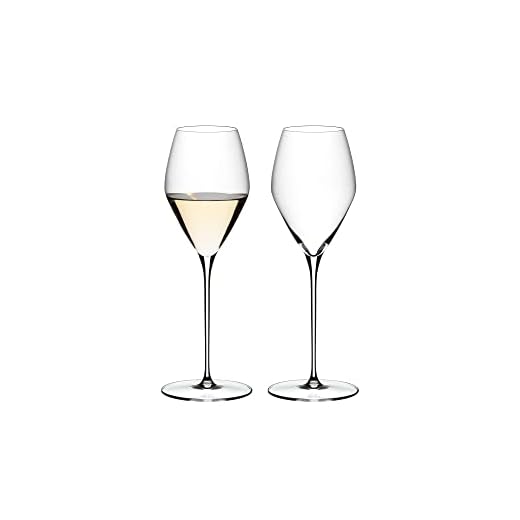



For those sensitive to histamines, the query of whether light-colored vino contains these compounds is critical. The reality is, yes, this type of beverage can harbor histamines, albeit typically in lower concentrations compared to their red counterparts. If you’re prone to reactions such as headaches or allergic responses, moderation is key.
It’s essential to know that histamine levels can fluctuate based on several factors, including the grape variety, fermentation process, and even the winemaking techniques employed. For example, varietals like Sauvignon Blanc and Chardonnay often present lower histamine concentrations, making them preferable choices for individuals with sensitivities.
In addition, seeking out organic or biodynamic options may also prove beneficial. These wines often undergo less processing, which can result in lower histamine levels. Always consider consulting with a knowledgeable sommelier or wine retailer to find suitable selections tailored to your needs.
Histamine Levels in Light-Colored Alcoholic Beverages
These beverages typically contain lower concentrations of histamines compared to their red counterparts. For those sensitive to histamines, opting for a light-colored option may be beneficial. The fermentation process, particularly with white varieties, tends to yield fewer histamines, primarily due to the absence of grape skins during fermentation, which are known to contribute to histamine production.
Choosing the Right Type
Selecting specific types can also influence histamine content. For example, varieties such as Sauvignon Blanc and Pinot Grigio generally exhibit lower levels, while some richer styles might present a different profile. Always check for labels indicating low histamine options if sensitivity is a concern.
Pairing and Consumption Tips
When pairing these beverages with food, consider lighter dishes such as seafood or salads, which not only complement the flavors but also help minimize discomfort for those who may react to histamines. Moderation is key; even lower histamine options can cause reactions if consumed excessively.
Understanding Histamines in Wine
Choosing beverages with lower levels of histamines can alleviate discomfort for those sensitive to these compounds. Generally, the concentration of histamines varies across different types of beverages, influenced by factors such as grape type, fermentation process, and aging. It is essential to recognize that some varietals tend to contain more histamines than others.
For individuals seeking options with reduced histamine content, consider the following guidelines:
| Type | Histamine Level | Recommendations |
|---|---|---|
| Light and Crisp Varietals | Lower | Sauvignon Blanc, Pinot Grigio |
| Full-bodied Whites | Moderate | Chardonnay, Viognier |
| Sweet Wines | Variable | Moscato, Riesling |
| Organic Options | Lower | Look for organic certifications |
Choosing organic selections may result in reduced histamine levels, as they often undergo less processing. Always remember to check labels or consult with knowledgeable staff in stores or restaurants to identify selections that suit your preferences.
Pairing food with beverages that have lower histamine levels can enhance your dining experience. Opt for fresh, lighter dishes that complement the chosen varietals, minimizing any potential histamine interactions. Experimenting with different combinations will lead to delightful discoveries.
Comparing Histamine Levels in White and Red Variants
Generally, red types contain higher concentrations of histamine compared to their lighter counterparts. This difference arises primarily from the fermentation process and the grape varieties used.
Key Factors Influencing Histamine Concentration
- Fermentation Duration: Red varieties undergo extended skin contact during fermentation, which allows for more histamines to be extracted.
- Grape Skin Thickness: Thicker skins, often found in red grapes, contribute to elevated histamine levels.
- Production Techniques: Certain methods used in crafting reds can amplify histamine production.
While lighter selections do contain histamines, the amounts are typically lower. Those sensitive to histamines may consider choosing lighter options or focusing on specific brands known for lower levels.
Practical Recommendations
- Experiment with different brands to find lighter selections that suit your palate.
- When dining out, inquire about the histamine content of various types.
- Pair lighter wines with dishes that complement their flavor profiles, enhancing your overall experience.
For those curious about cooking, you might want to check out how long does it take to cook diced chicken to elevate your culinary skills.
Common Symptoms of Histamine Sensitivity
Individuals sensitive to histamide often report a range of reactions after consumption of certain beverages. Common symptoms include headaches, nasal congestion, and skin irritations such as hives or flushing. Digestive issues like bloating, diarrhea, or stomach cramps may also arise.
Some may experience respiratory problems, including asthma-like symptoms, or a feeling of tightness in the chest. Fatigue and mood changes, such as anxiety or irritability, can occur as well. It’s crucial to monitor these symptoms and consult a healthcare provider for proper diagnosis and management strategies.
Keeping a food and beverage diary can help identify specific triggers. Gradual elimination of suspected items from the diet may assist in determining individual tolerance levels. Always seek expert advice if symptoms persist or worsen. Understanding personal limits is key to enjoying beverages without discomfort.
Tips for Choosing Low-Histamine White Wines
Opt for bottles made from grape varieties known for their lower levels of compounds that can trigger reactions. Sauvignon Blanc and Pinot Grigio are often better choices than others.
Look for wines labeled as “natural” or “organic.” These tend to have fewer additives and preservatives, which can contribute to histamine content.
Consider selecting younger vintages. Older bottles may have higher histamine levels due to prolonged aging processes and oxidation.
Pay attention to the production methods. Wines that undergo malolactic fermentation can have increased histamine levels, so opt for those that do not.
Explore regions known for producing lighter, fresher styles. Wines from cooler climates are often associated with lower histamine concentrations.
Ask for advice from knowledgeable staff at wine shops or restaurants. They can guide you toward selections that align with your needs.
Experiment with different producers. Smaller, boutique wineries often focus on purity and may offer options with less histamine content.
Keep a tasting journal. Note which varieties and brands work well for you, helping to refine your choices over time.
Alternatives for Histamine-Intolerant Wine Drinkers
For those sensitive to histamine levels in fermented beverages, several excellent alternatives exist. Opt for sparkling options, such as Prosecco or Cava, which often contain lower histamine concentrations compared to many still varieties.
Recommended Choices
- Champagne: Many non-vintage selections have reduced histamine levels.
- Low-sulfite wines: These can be gentler on the system and may also contain less histamine.
- Organic wines: They are typically made with fewer additives, which may result in lower histamine content.
Exploring regions known for producing lighter, fresher styles can also lead to safer options. Look for varietals like:
- Sauvignon Blanc
- Pinot Grigio
- Chenin Blanc
Other Beverage Options
If fermented drinks continue to cause discomfort, consider non-alcoholic beverages. Some delightful alternatives include:
- Herbal teas: Chamomile and peppermint are soothing choices.
- Fresh juices: Opt for apple or pear for a refreshing taste.
- Flavored sparkling water: These can mimic the celebratory feel of traditional drinks without the histamines.
Experiment with these options to find what suits your palate and body best. Always pay attention to how your body reacts, as individual tolerances can vary significantly.
FAQ:
Does white wine contain histamines, and if so, how does that affect people who are sensitive to them?
Yes, white wine does contain histamines, although typically in lower amounts compared to red wine. Histamines are compounds that can cause allergic reactions in some individuals. People who are sensitive to histamines may experience symptoms such as headaches, flushing, or nasal congestion after consuming wine. The level of histamines in wine can vary based on factors like the grape variety and fermentation process. Therefore, individuals with histamine intolerance should consider trying different types of white wine or consult with a healthcare professional for personalized advice.
Why do some people claim to have allergic reactions to white wine?
Some individuals report allergic reactions to white wine, which can be attributed to several factors. While histamines are one potential cause, sulfites are another common culprit. Sulfites are preservatives used in winemaking to prevent oxidation and spoilage. People with sulfite sensitivity may experience asthma-like symptoms or skin reactions. Additionally, other compounds found in wine, such as tannins and various phenolic compounds, can also trigger reactions in sensitive individuals. It’s important for those who experience adverse effects to identify the specific cause through trial and error or medical testing.









